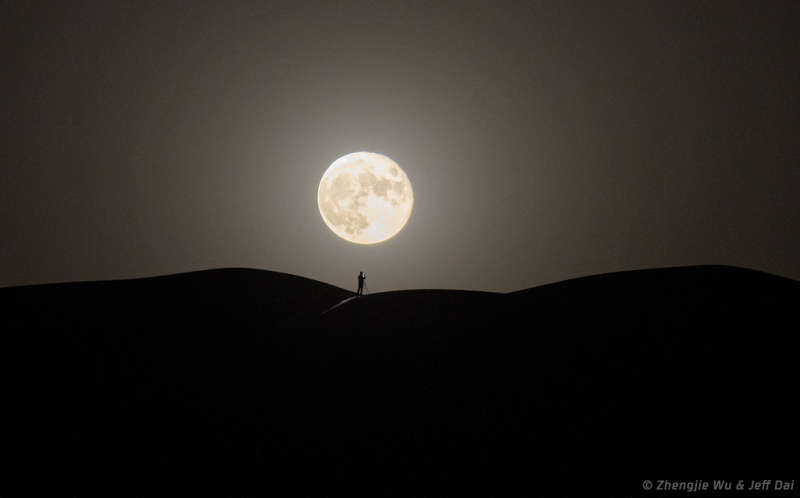Explanation: A photographer in silhouette stands in bright moonlight as the Full Moon rises in this well-planned telephoto image. Of course, the Full Moon is normally the brightest lunar phase. But on November 18/19, the Full Moon's light will be dimmed during a deep partial lunar eclipse seen across much of planet Earth. At maximum eclipse only a few percent of the lunar disk's diameter should remain outside the Earth's dark umbral shadow when the Moon slides close to the shadow's southern edge. Near apogee, the farthest point in its orbit, the Moon's motion will be slow. That should make this second lunar eclipse of 2021 an exceptionally long partial lunar eclipse. For most of North America the eclipse partial phases will be visible in predawn hours. Since eclipses tend to come in pairs, this lunar eclipse will be followed by a solar eclipse in two weeks on December 4.
1999 2000 2001 2002 2003 2004 2005 2006 2007 2008 2009 2010 2011 2012 2013 2014 2015 2016 2017 2018 2019 2020 2021 2022 2023 2024 2025 |
Yanvar' Fevral' Mart Aprel' Mai Iyun' Iyul' Avgust Sentyabr' Oktyabr' Noyabr' Dekabr' |
NASA Web Site Statements, Warnings, and Disclaimers
NASA Official: Jay Norris. Specific rights apply.
A service of: LHEA at NASA / GSFC
& Michigan Tech. U.
|
Publikacii s klyuchevymi slovami:
full moon - polnolunie - lunnoe zatmenie
Publikacii so slovami: full moon - polnolunie - lunnoe zatmenie | |
Sm. takzhe:
Vse publikacii na tu zhe temu >> | |
